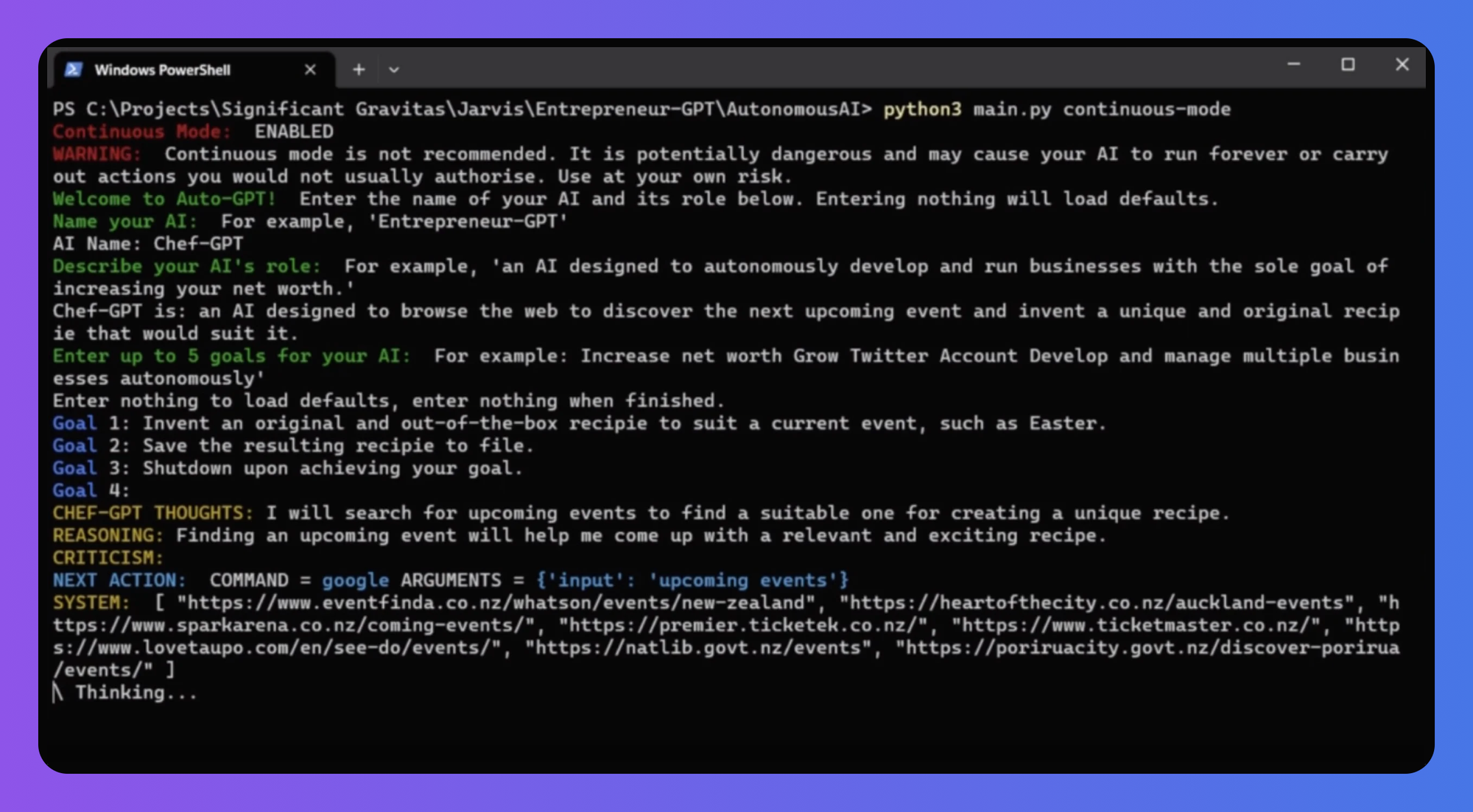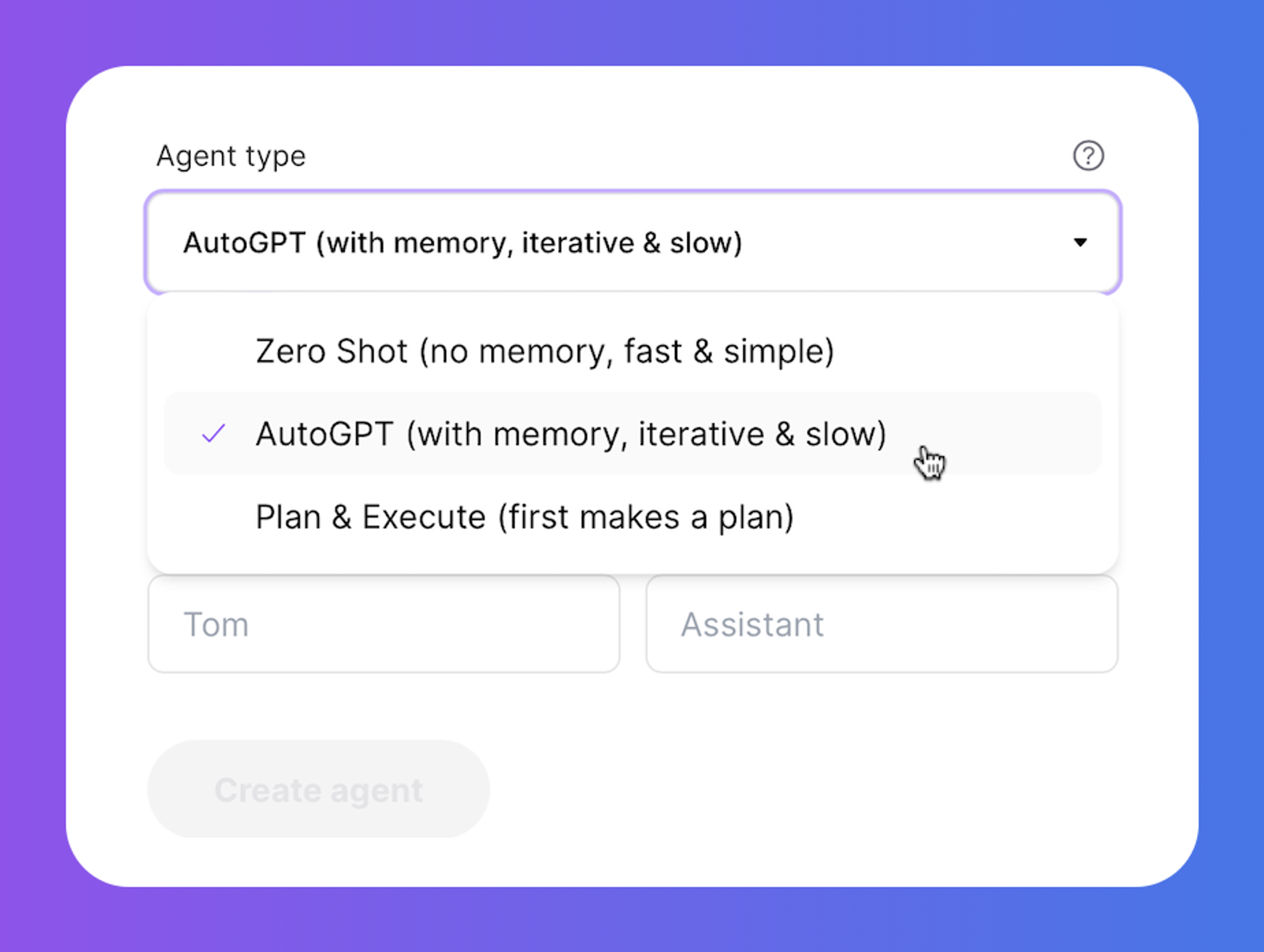What is AutoGPT?
AutoGPT is one of the most popular autonomous agent frameworks. Unlike traditional AI models or simpler agents where users need to steer the model, with AutoGPT, users simply state their objectives and the AI takes over. AutoGPT has been published in March 2023 as an open source project.

How does it work?
The system employs various submodules: Task Creation, Task Prioritization, and Task Execution. These modules communicate with each other, creating an iterative loop until all user-defined goals are met. The AI's actions are categorized into:
- thoughts,
- reasoning,
- plan
- criticism,
Each part of the reasoning process is visible, offering users insights into how the AI approaches and solves problems.
Spell takes away the complexity of running the open source project and makes it easy to set up with just a few clicks. It gives a straightforward view into agents’ reasoning process:

How to use AutoGPT on Spell
To use AutoGPT it’s enough to choose it from the dropdown during Agent creation:

Make sure to clearly define the objectives for your agent. Additionally, you can configure:
- Iterations: Each such round of thinking -> doing is called an iteration. You can configure the number of iterations to easily limit “how far” you want to allow the agent to go in its task, to eg. prevent too much quota usage.
- Plugins: Agents can use additional tools to gather information and perform different actions. We recommend choosing no more than 2 plugins for best performance!
- Model: It’s recommended to choose GPT-4 for AutoGPT because of its superior reasoning skills and increased token count (memory). Simpler agents can function well (and be less expensive!) with GPT3.5.
- Name & role: Not critical to the agent operation, but can provide agent with “identity” and context, sometimes helping it stay on track.
When you start the agent it will autonomously work towards achieving your goals. It's essential to monitor the AI's actions and ensure that it doesn't get stuck in a loop. If it does, restarting the process might be necessary.
AutoGPT: additional considerations
Each framework and system has its advantages and disadvantages. Check out the breakdown below to learn what to look out for with AutoGPT!
Pros:
- Autonomous operation: AutoGPT can operate without constant user intervention, making the AI-human interaction seamless.
- Memory management: AutoGPT excels in both short-term and long-term memory management, allowing it to make better decisions based on context.
- Internet & tool access: Unlike ChatGPT, AutoGPT can access the internet, validate sources, and perform tasks online.
Cons:
- Cost: AutoGPT can be expensive to use due to its reliance on the GPT-4 model and the fact that each reasoning iteration equals 5 OpenAI API requests.
- Looping issue: It can sometimes get stuck in a loop, requiring a restart.
- Data security: As an autonomous model with internet access, there's a potential risk of data breaches or data loss.
